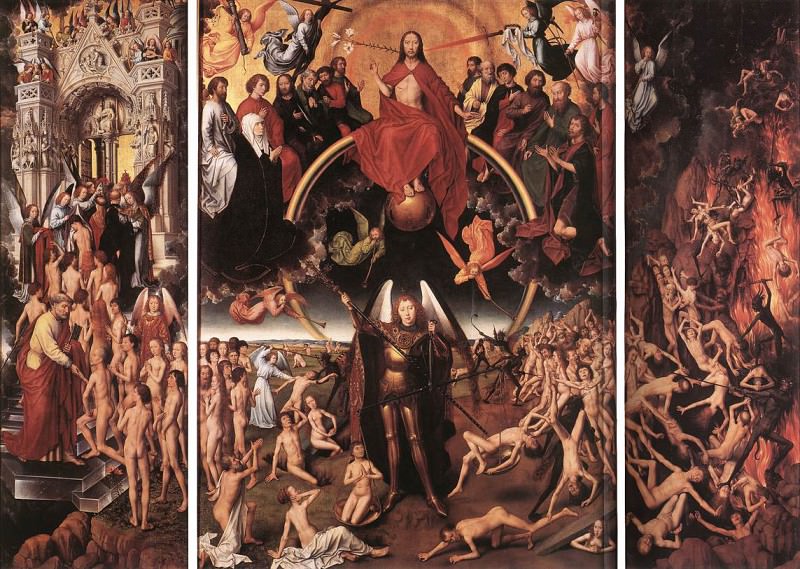Last Judgment Triptych (open) 1467 Hans Memling (1430-1494)
Hans Memling – Last Judgment Triptych (open) 1467
Edit attribution
Download full size: 1143×812 px (0,2 Mb)
Painter: Hans Memling
One of Hans Memling’s most famous and significant works is a triptych for a monastery church called The Last Judgment. The approximate time of its creation is from the 1460s to the 1470s. It was commissioned by a wealthy bank representative in Bruges. The pictorial work is composed of a large central part and narrower sashes on either side of it. The biblical scenes are painted in oil on the oak boards. The Flemish painter expressed in the painting his understanding of the looming Apocalypse.
Description of Hans Memling’s "The Last Judgment" triptych
One of Hans Memling’s most famous and significant works is a triptych for a monastery church called The Last Judgment. The approximate time of its creation is from the 1460s to the 1470s. It was commissioned by a wealthy bank representative in Bruges.
The pictorial work is composed of a large central part and narrower sashes on either side of it. The biblical scenes are painted in oil on the oak boards.
The Flemish painter expressed in the painting his understanding of the looming Apocalypse. The main and central figure in the composition is Christ, seated on a rainbow, which denotes the connection between man and God. In general, the canvas abounds with similar symbols. For example, the sword and lily branch at Jesus’ bedside carry a profound meaning: on the one hand, denoting mercy, on the other hand - a just judgment.
The chief judge is surrounded by his "retinue" - the apostles, the Baptist and Mother Mary. The angels hold the signs of Christ’s Passion in their hands. The background behind these figures blazes with fire in a black sky.
At the bottom of the central canvas, the Archangel Michael divides the sheet into two, weighing the souls of righteous and sinful men. On the ground are seen devastated graves, from which the dead rise to participate in the Apocalypse.
The right sash of the triptych shows hell burning with flames, with black figures of demonic beings and naked human figures intertwined in a heap. The left picture carries the opposite content--here the gates of paradise await the righteous; calm, peaceful men and women ascend the crystal staircase.
What is the peculiarity of Memling’s "Last Judgment"? A grandiose work was performed, in which the author showed himself as a brilliant portraitist, depicting the genuine emotions of people, with bright colors, he united in a single whole multi-subject picture.
Кому понравилось
Пожалуйста, подождите
На эту операцию может потребоваться несколько секунд.
Информация появится в новом окне,
если открытие новых окон не запрещено в настройках вашего браузера.
You need to login
Для работы с коллекциями – пожалуйста, войдите в аккаунт (open in new window).




















You cannot comment Why?